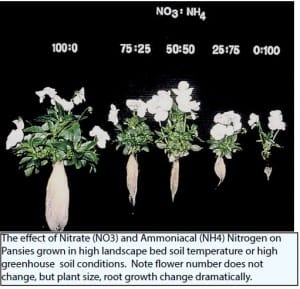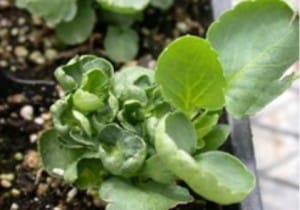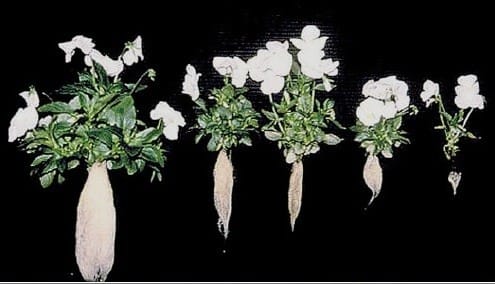Info is taken from the Georgia Guide for Production and Landscape Use of Pansy and Violas by Paul A. Thomas and Jean L. Williams-Woodward, Extension Specialists, UGA College of Agricultural and Environmental Sciences.
Here are some tips on care for pansies and violas in the landscape from this publication.
- Maintain a soil pH of 5.4 to 6.2. If your pH rises above 6.2, you will run into nutritional and disease problems. If your pH falls below 5.2, you risk nutrient toxicities.
 Use fertilizer containing the nitrate (NO3) form of nitrogen (as opposed to ammoniacal nitrogen (NH4) or urea) Nitrate is taken up more readily in cold weather, and it does not cause as much stretching in hot weather. Products such as 15-2-20, and other products especially formulated for pansies have enhanced nitrate over ammoniacal nitrogen ratios, possess low phosphorus, and generally have the fertilizer elements in the right ratios for pansies.
Use fertilizer containing the nitrate (NO3) form of nitrogen (as opposed to ammoniacal nitrogen (NH4) or urea) Nitrate is taken up more readily in cold weather, and it does not cause as much stretching in hot weather. Products such as 15-2-20, and other products especially formulated for pansies have enhanced nitrate over ammoniacal nitrogen ratios, possess low phosphorus, and generally have the fertilizer elements in the right ratios for pansies.
- If you use calcium nitrate [Ca(NO3)2] as a nitrogen source without added boron, you run the risk of saturating the plant with calcium. This abundance of calcium can cause a boron deficiency since calcium blocks boron uptake by the roots. Frequent irrigation and use of less-expensive fertilizers without balanced trace elements can also cause serious boron imbalances. A boron deficiency appears as tightly bunched up new growth that eventually leads to deformed leaves and poor flowering. If you need to supplement Boron, use a drench by mixing 0.85g borax (11%B) or 0.48g Solubor(20%B) per 100 gallons of water.
-

Boron deficiency in pansies Carefully monitor irrigation and keep pansies slightly on the “dry side of moist soil” to “harden” growth prior to very cold weather. If your beds are continuously wet, even in periods of normal rainfall, consider adding organic matter and other materials next year to increase drainage for the next pansy season.
- Pine straw, applied 2 to 4 inches thick, over the top of the entire bed (plants and all) during extreme cold is one of the best ways to save a pansy planting from freeze injury. This helps trap heat in the soil, prevents it from freezing and greatly reduces plant exposure to cold and desiccating wind. Carefully rake the pine straw off the bed when the cold weather passes.
- These freeze protection measures are generally taken only when the air temperature is expected to drop below 20 degrees F for a considerable length of time, and when dry, cold winds accompany the weather change, and especially when the soil is in jeopardy of freezing solid. Healthy plants can generally survive short periods of temperatures down to the single digits without protection.
The publication also includes information on diseases, in-depth soil and plant fertility info and other good sources of information. See the entire publication.
